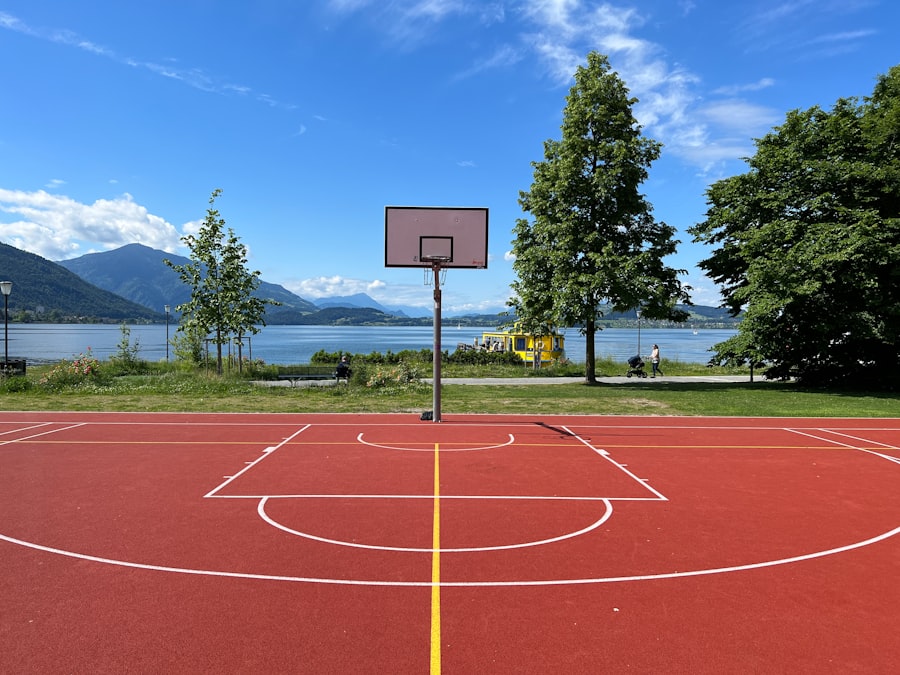Download links
How to install The Science of Bouncing Ball Dynamics APK?
1. Tap the downloaded The Science of Bouncing Ball Dynamics APK file.
2. Touch install.
3. Follow the steps on the screen.
Description
The behavior of a bouncing ball is a fascinating interplay of physics principles, primarily governed by Newton’s laws of motion. When a ball is dropped from a height, it accelerates towards the ground due to gravity, which exerts a force on it. The acceleration due to gravity is approximately 9.81 m/s² near the Earth’s surface.
Upon impact with the ground, the ball deforms slightly, storing some of the kinetic energy as potential energy in the form of elastic deformation. This energy is then released as the ball returns to its original shape, propelling it back into the air. The height to which the ball rebounds is influenced by several factors, including the initial drop height, the material properties of the ball, and the surface it strikes.
The dynamics of a bouncing ball can be described using concepts such as momentum and energy conservation. When the ball hits the ground, it experiences an impulse that changes its momentum. The change in momentum is directly related to the force exerted by the ground during the collision and the duration of that contact.
The efficiency of this energy transfer determines how high the ball will bounce back. In an ideal scenario, where no energy is lost to heat or sound, a ball dropped from a certain height would bounce back to that same height. However, real-world conditions often lead to energy losses, resulting in lower rebound heights.
Key Takeaways
- The physics of bouncing balls involves the transfer of kinetic energy and potential energy as the ball deforms upon impact and then rebounds.
- Factors affecting bouncing ball dynamics include the material, shape, and air pressure of the ball, as well as the angle and force of impact.
- Elasticity plays a crucial role in bouncing ball behavior, as it determines how much energy is stored and released during the bounce.
- The surface material of the ground or court significantly influences bouncing ball performance, with harder surfaces producing higher bounces.
- Understanding the relationship between height and bounce is essential for predicting and controlling the behavior of bouncing balls in various scenarios.
Factors Affecting Bouncing Ball Dynamics
Several factors influence how a ball behaves when it bounces. One of the most significant is the material composition of both the ball and the surface it strikes. For instance, a rubber ball will typically bounce higher than a tennis ball due to its greater elasticity and ability to store and release energy efficiently.
The internal structure of the ball, including its air pressure and material density, also plays a crucial role in determining its bounce characteristics. A well-inflated basketball will rebound more effectively than one that is under-inflated because it maintains its shape better during impact. Another critical factor is the angle at which the ball strikes the surface.
A ball dropped vertically will bounce straight back up, while one that strikes at an angle will have a different trajectory upon rebounding. This phenomenon can be explained through the laws of reflection and conservation of momentum. The angle of incidence—the angle at which the ball approaches the surface—will equal the angle of reflection, affecting not only how high it bounces but also where it lands after rebounding.
Additionally, environmental conditions such as temperature and humidity can alter the properties of both the ball and the surface, further complicating the dynamics of bouncing.
The Role of Elasticity in Bouncing Ball Behavior

Elasticity is a fundamental property that dictates how materials deform under stress and return to their original shape once that stress is removed. In the context of bouncing balls, elasticity is crucial for determining how much kinetic energy is converted into potential energy during deformation and vice versa during rebound. The coefficient of restitution (COR) is a key measure used to quantify elasticity; it represents the ratio of the velocity after impact to the velocity before impact.
A COR value close to 1 indicates a highly elastic collision, where most of the kinetic energy is conserved, while a value significantly less than 1 indicates energy loss. Different types of balls exhibit varying degrees of elasticity based on their construction materials. For example, a superball made from high-performance rubber can achieve a COR close to 0.9, allowing it to bounce impressively high when dropped from a significant height.
In contrast, a foam ball has a much lower COR due to its softer material, resulting in less efficient energy transfer during bounces. Understanding these properties allows manufacturers to design sports equipment tailored for specific performance characteristics, enhancing gameplay and user experience.
The Influence of Surface Material on Bouncing Ball Performance
| Surface Material | Height of Bounce (inches) | Rebound Efficiency (%) |
|---|---|---|
| Wood | 10 | 80 |
| Concrete | 6 | 60 |
| Rubber | 12 | 90 |
The surface on which a ball bounces significantly affects its performance and behavior during impact. Different materials exhibit varying degrees of hardness and friction, which can alter how much energy is absorbed or reflected during a bounce. For instance, a basketball court made from hardwood provides a hard surface that allows for high-energy returns when a basketball strikes it, resulting in optimal bounce characteristics for players.
Conversely, a grass field absorbs more energy due to its softer texture, leading to lower bounce heights for balls like soccer balls or tennis balls. Moreover, surface texture plays an essential role in determining how much grip or friction is present during contact with the ball. A rough surface can increase frictional forces, potentially affecting how far or high a ball bounces after impact.
For example, when a tennis ball strikes a clay court, it may not only bounce lower but also experience more spin due to increased friction compared to when it hits a hard court surface. This interaction between surface material and ball dynamics is critical in sports where precision and control are paramount.
Understanding the Relationship Between Height and Bounce
The relationship between drop height and bounce height is often nonlinear due to various factors influencing energy loss during impact. When a ball is dropped from a greater height, it possesses more gravitational potential energy, which converts into kinetic energy as it falls. However, upon impact with the ground, not all this kinetic energy is converted back into potential energy for the rebound; some is lost due to factors such as heat generation, sound production, and internal friction within the ball’s material.
In practical terms, this means that while increasing drop height generally leads to higher bounce heights, there comes a point where diminishing returns occur due to these energy losses. For example, if a basketball is dropped from 10 feet, it may bounce back to 8 feet; however, if dropped from 20 feet, it might only reach 15 feet on its rebound due to increased energy dissipation during impact. This relationship highlights the importance of understanding both gravitational forces and material properties when analyzing bouncing dynamics.
The Impact of Air Resistance on Bouncing Ball Trajectory

Air resistance plays a significant role in determining how a bouncing ball behaves during its flight path after rebounding from a surface. As a ball moves through air, it encounters drag forces that oppose its motion; these forces are influenced by factors such as speed, surface area, and shape of the ball. For instance, a lightweight beach ball will experience more significant air resistance compared to a denser basketball when both are dropped from the same height.
The effect of air resistance becomes particularly pronounced at higher velocities; as a ball rebounds and ascends into the air after bouncing, it slows down more quickly due to drag forces acting against it.
In sports like basketball or volleyball, players must account for these aerodynamic effects when making shots or serves since they can significantly influence trajectory and overall performance.
Applications of Bouncing Ball Dynamics in Sports and Engineering
The principles governing bouncing balls have extensive applications across various fields, particularly in sports and engineering design. In sports like basketball and tennis, understanding how different balls interact with surfaces allows athletes and coaches to optimize training techniques and strategies for gameplay. For instance, basketball players often practice shooting from different distances and angles to account for how their shots will behave upon hitting the rim or backboard.
In engineering contexts, insights gained from studying bouncing dynamics inform product design across multiple industries. For example, manufacturers of sports equipment utilize knowledge about elasticity and material properties to create balls that meet specific performance standards for different sports. Additionally, engineers apply these principles in designing safety equipment such as helmets or padding that absorb impact forces effectively while minimizing rebound effects during collisions.
Future Developments in Bouncing Ball Technology
As technology continues to advance, future developments in bouncing ball design are likely to focus on enhancing performance through innovative materials and engineering techniques. Researchers are exploring advanced polymers and composite materials that could improve elasticity while reducing weight or enhancing durability. These innovations could lead to balls that maintain their performance characteristics over extended periods or under varying environmental conditions.
Sensors embedded within balls could provide data on bounce height, speed, and trajectory during play, offering athletes valuable insights into their performance and areas for improvement. Such advancements could revolutionize training methodologies and enhance competitive strategies across various sports disciplines.
In conclusion, understanding the physics behind bouncing balls encompasses numerous factors ranging from material properties to environmental influences. As research continues to evolve in this area, we can expect exciting developments that will further enhance our understanding and application of these principles in both sports and engineering contexts.
FAQs
What is a bouncing ball?
A bouncing ball is a small, round object that is designed to rebound off of surfaces when dropped or thrown.
What are bouncing balls made of?
Bouncing balls are typically made of rubber or a similar elastic material that allows them to compress and then quickly regain their original shape when they come into contact with a surface.
How does a bouncing ball work?
When a bouncing ball is dropped or thrown, it compresses upon impact with a surface, storing potential energy. This potential energy is then converted into kinetic energy as the ball rebounds off the surface, causing it to bounce back up.
What are some common uses of bouncing balls?
Bouncing balls are commonly used as toys, in sports such as basketball and tennis, and in various physical therapy and rehabilitation exercises.
Are there different types of bouncing balls?
Yes, there are different types of bouncing balls, including super bouncy balls, rubber balls, and foam balls, each with varying levels of elasticity and bounce height.





